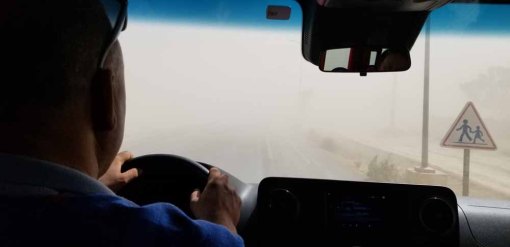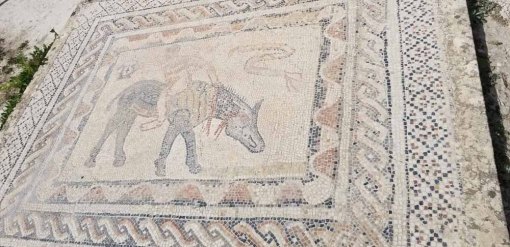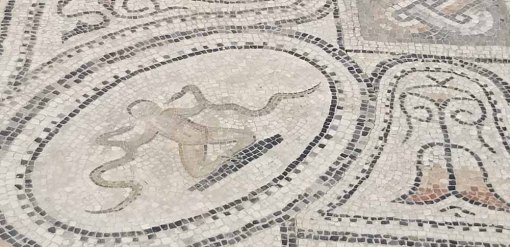
Katie looking iconic!
From Meknes, we made our way to Fez for two nights. Fez has been described as the “Cultural Capital of Morocco.” With 1.7 million inhabitants, it is the second largest city in the country. It houses a Royal Palace, and is known for its medinas, religious schools, and production of ceramics, textiles and leather. It was founded sometime in the 8th Century.
Our drive took us past uncounted olive plantations and other types of farms or ranches.
We arrived in time to settle into hotel rooms, and then went out to dinner. Mohamed suggested I try the Chicken Pastilla. It’s a twist on chicken for dinner! It’s kind of lightly sweet pastry layers over chicken. Delicious!
In the morning, we headed to a kasbah with a commanding view of the city.

Morning view of Fez

Fez sunset from roof top bar
From the hilltop, we could see castle walls, the medinas, and university, mosques, city gates, and more.
Like other cities in Morocco, the roads were in good condition and the traffic manageable. Many of the streets were lined with palm trees and modern lighting.
This slideshow requires JavaScript.
It was the beginning of another beautiful day. Next on our agenda was a visit to Dar al-Makhzen, the Royal Palace. We stopped in a square where the palace gates are located. There were guards dressed to the nines from various military branches. Each gate was painstakingly crafted in intricate detail.


Dar al-Makhzen Gate Adele and Katie

The detail is not only the tiled mosaic but the metal edging

Lots of patterns

The guards
We then journeyed to a ceramics factory. I hesitate to call it a factory because everything is hand made. There, skilled craftsmen perform all the tasks necessary to make the various products. Everything conceivable is made. Bowls, cups, urns, tagines, tablets, vases, figurines and more. We saw everything from the raw clay to how artisans turned pottery wheels, added metal decorations, and fashioned tile inlays.

Lighting made sweet images!

Tajines, bowls and urns waiting the next step
Even in their unfinished form, the shapes and colors made for very beautiful images!

Vases

Tajines

This finished bowl really caught my eye but I couldn’t afford it!
We got close up glimpses of the artisans at work. Each was a specialist in one area or another. All kinds of skills here. Metal work. Chiseling. Sculpting. Painting.

Everybody in Morocco wears a NY Yankee hat!

This will become a Tajine

Adding metalic accents

Making inlays
Next we took a stroll through one of the busy medinas. We’d wind through the many alleyways, filled with sections of shops – in a section you can find textile shops, meat shops, jewelry shops, dress shops – pretty much anything. Along the way, a donkey or cart might squeeze by. Better keep your valuables close at hand, our local guide cautioned.
This slideshow requires JavaScript.
Like other medinas, it had seemingly endless alleys leading in all directions. And all along there are doors – some doors lead to shops, but others lead to restaurants, homes, riads, or even places of worship. And then, just when you are feeling overwhelmed, the call to prayer from the Imam fills the air!
As I’ve said before, whilst walking the medinas, an unassuming doorway often leads to something fantastic. Here, we encountered an open roof mosque. It was incredibly meticulously crafted with marvelous detail.
This slideshow requires JavaScript.
Two more crafts to visit. We toured a section of town where they make leather goods. I imagined it employed several thousand people. And we went to a textiles “factory.” That is where I got the next image of Katie in a traditional head scarf!

That evening, we all gathered for sunset drinks at a hotel roof bar. The stars came out.
The following day would be a long drive out to Midelt – getting closer to the Atlas Mountains.


































































